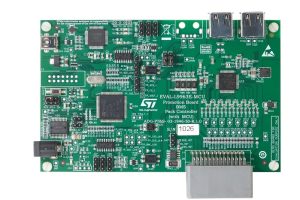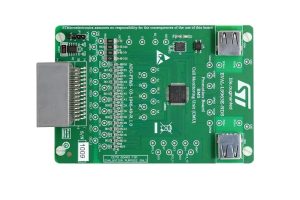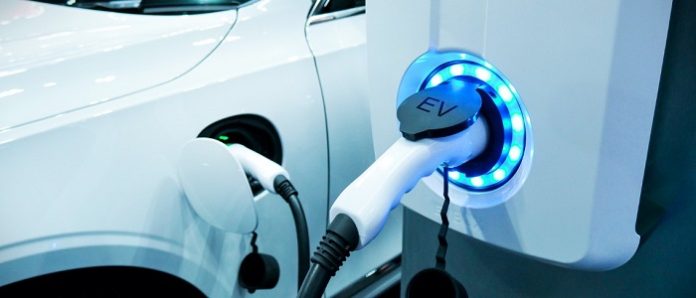As Battery Management Systems (BMS) are transforming electric modes of transportation, we released the L9963E at the beginning of this year to address New Energy Vehicles in China and around the world. The device has a unique architecture that enables it to measure from four to 14 cells in series without any desynchronization delay, and our tests show that it’s possible to daisy chain 31 devices while still enjoying a latency of less than 4 µs.
However, the L9963E goes far beyond a simple measurement of voltages or a typical Coulomb counter, which is why we also published a white paper to delve into the intricacies of BMS design. Additionally, and to help engineers and decision-makers further, we wanted to look at the five things that one must take into account when working on a battery management system.
Why Use a Battery Management System?
A BMS measures the current and voltage out of battery cells and sends that information to an application that will determine the battery’s state, called State of Charge or SOC. These measurements help determine the battery’s state of health (SOH) and remaining useful life (RUL) by computing its actual maximum capacity, which decreases over time. It will estimate if a battery is still functional or needs replacement and can enable additional optimizations. By determining the SOC and SOH of each battery cell, a BMS can balance its charge and discharge to ensure an even wear, thus prolonging the battery’s lifespan and extracting more performance. Today, the L9963E also plays a crucial role in ensuring the battery’s safe operations.
1. L9963E: Watch Out for Accurate Measurements and Fast Operations
Understanding Accuracy
The first feature engineers traditionally focus on is the BMS’ accuracy. If a system is not accurate, the user will suffer immense frustrations at the lack of relevant information. Hence, a BMS must not only measure the state of each cell with high precision, but it must do so exceptionally quickly, otherwise, by the time the IC is done reading the last cells in the stack, the measure reported for the first cell is no longer accurate, and the application will not offer results that reflect the actual state of charge.
Maximum Error of ±2 mV
The L9963E offers one of the best accuracies in the industry with a maximum error of ±2 mV while measuring the current to know the actual capacity of each cell. Additionally, the device’s architecture ensures that each cell has specific resources to process the electrical data captured by the sensing elements. Traditionally, competing models will share these resources between cells. However, by offering dedicated resources for each cell, we can provide simultaneous readings and avoid desynchronization delays. The L9963E in a daisy chain also communicates through a serial bus offering a bandwidth of 2.66 Mbps while most of the industry hovers around 1 Mbps. As a result, reading and processing 434 cells takes between 4 ms to 16 ms.
2. Battery Management System: Watch Out for Safety, It’s a Priority
Understanding Safety
A feature of a BMS that too many designers tend to overlook is its safety. The system’s accuracy serves its performance but will also determine if cells are suffering from over-and under-voltages, or if the system is experiencing overheating or overcurrent. For instance, in the event of a crash, an electric car must figure out that the battery is no longer within typical norms and must initiate a shutdown, or the damages could be catastrophic.
Unique Redundancy
Such capabilities demand an IC that’s robust and capable of still functioning, even in dire circumstances. It is also crucial to prevent any false readings that would wrongly start a shutdown while the car is cruising at high speed. Hence, the L9963E has a unique redundancy feature that enables it to cross-check its analog-to-digital converters (ADC) to guarantee their accuracy. If they are no longer reliable, the device can force a neighbouring ADC to take over a faulty one and solve the issue.
3. L9963E: Watch Out for the Performance Per Cost Ratio

As electric vehicles become more affordable, costs constraints are increasingly essential. After all, a powerful IC that’s too expensive loses a lot of its appeal. The L9963E differentiates itself by offering a rich feature list without blowing up its die size, thus remaining cost-effective. Moreover, a traditional BMS IC requires an external Zener diode in parallel to each cell. The system cannot know which cell will first make contact with the connector during system assembly, and since it is always a random event, a Zener diode on each cell protects the IC. The hot-plug and robust architecture of the L9963E means that engineers can do without these Zener diodes, which simplifies the PCB and reduces the overall costs.
4. L9963E: Look Beyond the Prototype With 2 Evaluation Boards and a Powerful MCU
Understanding Ecosystem
A successful battery management system starts with a straightforward proof-of-concept. Coming up with a feature-rich design is far from easy, and it often takes a working demo to convince a client. ST offers two evaluation boards for its L9963E. The first one, the EVAL-L9963E-MCU, includes a microcontroller and comes with a graphical user interface the STSW-L9963E to help developers create applications faster. The second one, the EVAL-L9963E-NDS, attaches to the first to put multiple L9963E in a daisy chain.
Using the L9963E with the SPC58 Chorus

Many of our customers love to pair the L9963E with an SPC58 Chorus microcontroller because the models with 6 MB or more of storage offer all the capacity an application needs to store the numerous data points coming from the BMS, while its multicore architecture enables developers to dedicate one core to this application and use the others for typical processes. The MCU also includes a lot of interfaces, with six FlexCAN buses, to make the entire design more flexible. Indeed, engineers need to think beyond the BMS, and using an SPC58 Chorus alongside the L9963E can make this process a lot smoother.
5. Battery Management System: Watching Out for Future Applications Starts Now
All engineers try to future-proof their design as much as possible, but in the case of battery management systems, a design must not only think of the car of tomorrow, but all the new products that are now using a BMS, such as electric bikes and scooters, or portable medical equipment, among many others. The L9963E is flexible enough to adapt to a lot more designs than the traditional electric car. Thanks to its ability to measure as little as four cells, its small 10 mm x 10 mm TQFP64EP package, and its cost-effectiveness, a company can easily use the same ST device in many types of vehicles or applications, thus saving on development costs.
For more information, visit www.st.com








